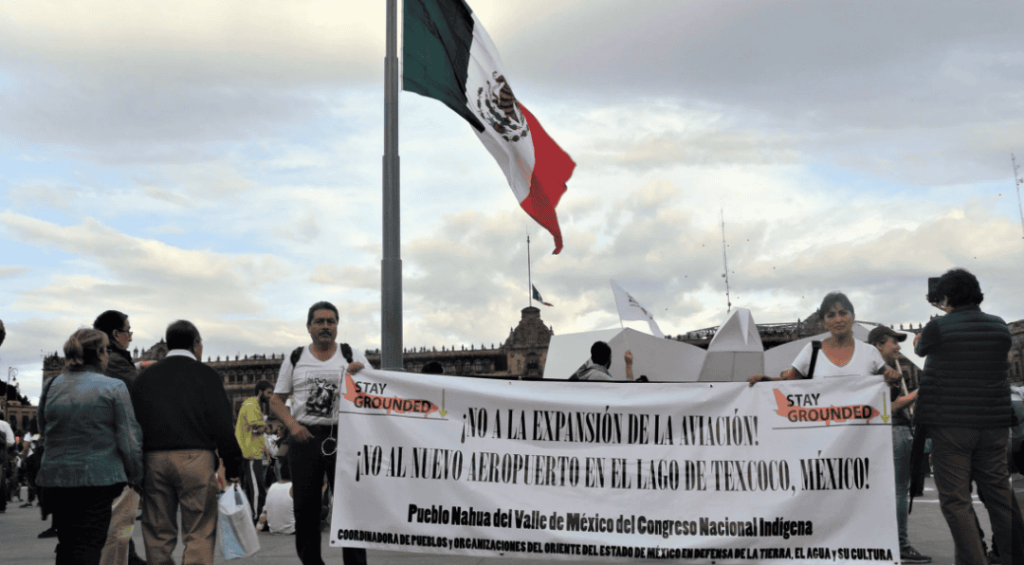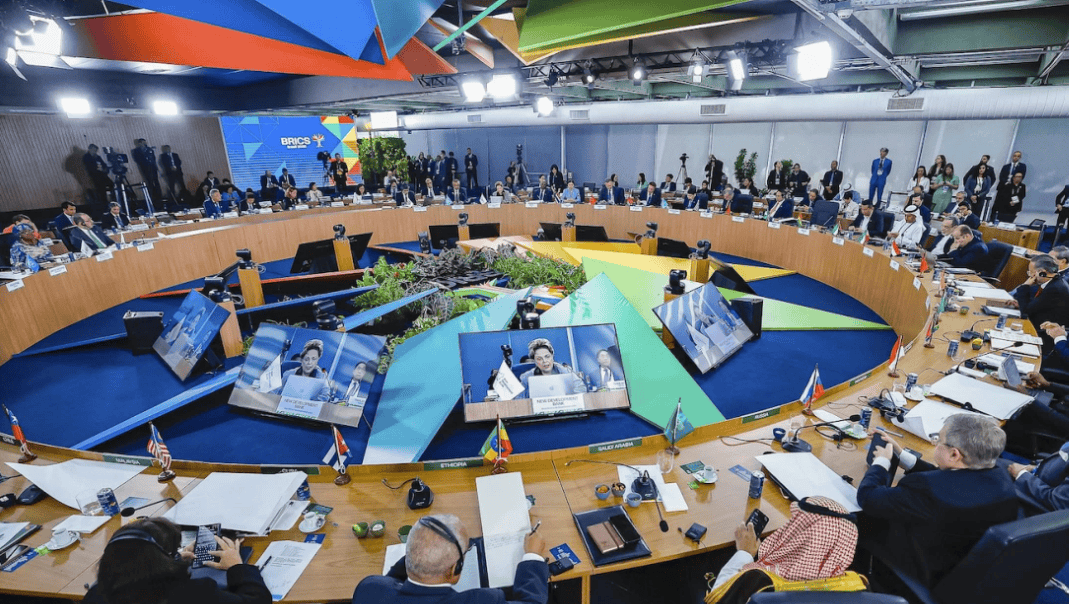Populism poses significant economic risks, often undermining long-term growth for short-term political gains. This column uses the example of the cancellation of Mexico City’s New International Airport in 2018 to exemplify how impulsive policy decisions can trigger uncertainty, deter investment, and lead to economic downturns. The author finds that the cancellation led to a 3% depreciation of the peso and an estimated GDP loss of $68 billion within a year. The findings highlight the importance of maintaining institutional checks and upholding the rule of law, even when populist actions are framed as being for the ‘common good’.
Democracy promotes economic development (Naidu et al. 2014, Acemoglu et al. 2019). However, a rising internal threat is spreading across democracies worldwide: populism (Tabellini 2019, Guriev and Papaioannou 2022). One way to conceptualise populism is as a ‘thin-centered’ ideology that views society as fundamentally divided into two homogeneous, opposing groups: ‘the people’ against ‘the elite’. While this approach can gather support and bring political attention to marginalised voices, it often comes at a significant economic cost. Recent research shows that populists frequently rely on loose macroeconomic policies, increase protectionism and economic nationalism, and dismantle political checks that curb their power, leading to substantial economic and political consequences in the long term (Funke et al. 2021, 2023).
Populist leaders, however, often implement policies that reflect their rhetoric without fundamentally altering the existing economic or political regime, particularly in the short term. These policies are typically marked by a lack of technical rigour, disregard for the rule of law, and a focus on delivering quick, visible benefits – often at the expense of long-term outcomes – that prioritises politics over sound policy. Another defining feature of populism is the exploitation of direct democracy, primarily through referendums and plebiscites (Rosanvallon 2021).
In a recent paper (Woo-Mora 2024), I examine the short-term economic consequences of populist policies. I leverage a populist decision that serves as a macroeconomic natural experiment: the 2018 cancellation of Mexico City’s New International Airport (NAIM). The findings highlight how a single populist action can trigger uncertainty, deter investment, and lead to economic downturns within a short timeframe, even before policies dismantle economic and political checks on the government.
A macroeconomic natural experiment in Mexico
Mexico City’s Benito Juárez International Airport had been operating near full capacity for decades, leading to the proposal for a new airport in Texcoco, near Mexico City, in 2001. This sparked land expropriations and local unrest. In 2006, state forces brutally repressed residents near Texcoco, with numerous women being sexually assaulted, leading to the project’s initial cancellation, which ultimately proved to be temporary. President Peña Nieto restarted the project in 2013, relocating it a few kilometers away, despite ongoing controversy over environmental concerns, corruption allegations, and feasibility issues.
On 29 October 2018, Mexico’s president-elect, Andrés Manuel López Obrador, held an unofficial referendum to decide whether to halt the construction of NAIM, a major infrastructure project. Despite a voter turnout of less than 1% and pre-referendum polls indicating support for continuing construction, López Obrador used the results to cancel the project. By the time of the referendum and cancellation, at least 20% of the construction had been completed, and 60% of the investment was under contract. This controversial decision, made without the legal authority to call the referendum, became a defining moment of his administration, often referred to as its “original sin” (Espriú-Jiménez 2022).
This event serves as a plausible macroeconomic natural experiment: a policy change significant enough to outweigh potential confounding factors within a specific timeframe (Nakamura and Steinsson 2018). Using a synthetic difference-in-differences approach (Arkhangelsky et al. 2021), I show that the Mexican peso depreciated by 3% against the US dollar shortly after the announcement (Figure 1, Panel A). This result shows that the policy created heightened investor uncertainty: political uncertainty increases exchange rate volatility by creating ambiguity around future policies, prompting investors to frequently adjust their expectations, which causes currency fluctuations.
I replicate this analysis for multiple dates between January 2018 and February 2020 (Figure 1, Panel B). The results demonstrate that the exchange rate shock was uniquely linked to the NAIM decision, unlike any other preceding or subsequent policies or the presidential election results, highlighting the immediate economic impact of this particular populist policy. The only other moment of uncertainty during this period was the ratification of the USMCA trade agreement by the Mexican senate, which occurred eight months later. Since the NAIM decision preceded other major political and economic reforms, it provides a clearer context for analysing its immediate consequences.
Figure 1
A) SDID event study: Exchange rate around NAIM’s cancellation


Notes: Own elaboration. Synthetic Difference-in-Differences (SDID) event-study plot. The x-axis represents the relative time in days with respect to 29 October 2018, when AMLO announced the results of NAIM’s referendum and its cancellation. The y-axis represents the exchange rate from the Mexican peso (MXN) to the US dollar (USD) on a log scale. The red line represents the observed MXN to USD rate. The black line represents the synthetic MXN to USD. The synthetic MXN to USD which is a convex combination of the following currency weights: 22.3% Colombian peso (COP), 18.5% Russian ruble (RUB), 16.2% Argentinian peso (ARS), 15.6% Chilean peso (CLP), 15.3% Brazilian real (BRL), and 12.1% Turkish lira (TRY). The synthetic MXN to USD is a convex combination of the following time weights: 50.1% for one day before treatment and 49.9% for two days before treatment. The red text in the bottom center of the graph represents the SDID estimate and standard error in log points.
B) NAIM cancellation as a macroeconomic natural experiment


Notes: Own elaboration. The SDID estimates for MXN to USD use a two-week window for every Monday, Wednesday, and Friday, from January 2018 to February 2020. The x-axis represents the date, and the y-axis shows the SDID estimates and confidence intervals in log points. Estimates and confidence intervals in red correspond to NAIM’s referendum and cancellation dates. Estimates and confidence intervals in grey are not statistically significant, while those in black are statistically significant but unrelated to the policy of interest. The dotted vertical lines mark relevant dates described in the text.
Quantifying the impact: GDP loss
I apply the synthetic control method (Abadie 2021), using monthly economic indicators and quarterly GDP data to compare Mexico’s economic trajectory post-referendum with a counterfactual scenario where the policy was not implemented. Figure 2, Panel A, shows the monthly average treatment effect on the treated (ATT) or output gap, while Panel B presents the synthetic control method quarterly GDP estimates after accounting for quarterly interest and exchange rates. Within a year of the NAIM cancellation, Mexico’s GDP declined by 3.3% to 4.5%. In the paper, I show that the results remain consistent through a series of robustness and falsification checks.
The impact of NAIM’s cancellation translates to an estimated loss of around $68 billion (adjusted to 2024 prices), a figure eight times higher than the official financial costs of the project’s cancellation. This policy is comparable to other populist-driven economic decisions, such as the Brexit referendum. Interestingly, the effect of NAIM’s cancellation was both larger and faster than that of Brexit. Mexico’s GDP fell by up to 4.6% within a year of the referendum, whereas Brexit caused a decline of 1.7% to 2.5% over two and a half years (Born et al. 2019, Portes 2023). This comparison underscores how quickly and severely populist policies can affect economies.
Figure 2
A) Monthly economic activity ATT or output gap


Notes: Own elaboration. The y-axis shows the percent difference between the observed and Synthetic Control (SC) control unit. The x-axis shows the relative time to treatment in months. The red line is the gap between the observed unit and the SC in log points. The monthly Synthetic Control Method estimate is a convex combination of the U.S. (55.1%), Colombia (18.9%), Argentina (12.5%), Costa Rica (8.7%), Brazil (4.2%), and Canada (0.7%). The dark grey (light grey) ribbon shows 95% in-sample (90% out-of-sample) prediction intervals (Cattaneo et al. 2021). The labels at the top display the pre- and post-intervention root mean squared prediction error (RMSPE).
B) Quarterly GDP monetary synthetic control method estimates


Notes: Own elaboration. The y-axis shows Mexico’s quarterly GDP in USD at 2018 prices. The x-axis shows the year quarter. The quarterly Synthetic Control Method estimate is a convex combination of the United States (81%), Costa Rica (14.4%), and Argentina (4.6%). The observed Mexican quarterly GDP is shown in red, and the synthetic control is shown in black. The dark grey (light grey) ribbon shows 95% in-sample (90% out-of-sample) prediction intervals (Cattaneo et al. 2021). The labels at the top display the pre- and post-intervention root mean squared prediction error (RMSPE).
Uncertainty traps: How populist policies inhibit investment
Unlike other populist measures that may erode institutions or introduce protectionist policies over time, the NAIM cancellation caused immediate damage through an ‘uncertainty trap’ (Fajgelbaum et al. 2017). This theory suggests that when firms and investors face heightened uncertainty, they delay or halt investments, leading to prolonged economic stagnation.
Consistent with this theory, the NAIM cancellation triggered a significant rise in uncertainty, discouraging firms from investing in Mexico’s economy. The analysis in Figure 1 supports this: the exchange rate shows a spike in uncertainty following the policy announcement. Moreover, credit rating agencies downgraded Mexico’s outlook after the cancellation, citing concerns about investor confidence and policy uncertainty. By mid-2019, Fitch, Moody’s, and Standard & Poor’s had all revised their ratings or outlooks, with Banco de México also highlighting the increased uncertainty caused by the decision.
Major infrastructure initiatives like NAIM often drive economic growth by improving market access and boosting productivity. The repercussions of halting such projects extend beyond immediate financial costs. In the case of NAIM, the cancellation disrupted the construction sector and weakened Mexico’s economic outlook. The paper shows that gross fixed capital formation – a key measure of investment – fell by 8.8% within a year of the cancellation. This decline was more pronounced than in any other economic sector, severely affecting the construction industry in Central Mexico, where the infrastructure was planned, as well as across the country.
Isolating the medium- and long-term impacts of the policy is more challenging due to other confounding factors, including the COVID-19 pandemic. Nonetheless, the data suggest that the shock from the NAIM cancellation had lasting consequences, with short-term effects extending into the long term. These patterns align with the uncertainty trap model, where a significant economic shock triggers a cyclical downturn, with low activity levels sustaining uncertainty and further discouraging investment.
Conclusion and discussion
Traditional research on populism often focuses on long-term consequences, such as institutional decay or poor macroeconomic management. However, this paper highlights how populist policies can have immediate economic impacts when leaders prioritise short-term political gains. It demonstrates that populist actions, like AMLO’s use of an unofficial referendum, can destabilise economies by bypassing legal checks and creating an illusion of democratic legitimacy, leading to significant economic repercussions without dismantling institutions outright.
Some limitations remain. While continuing NAIM’s construction might have been more efficient and socially equitable, the complex relationship between development and corruption complicates this conclusion. Additionally, state-led infrastructure projects may involve repressive elements (Gonzalez et al. 2024). The analysis doesn’t fully capture local economic impacts, changes in urban structure, or environmental effects, highlighting the need for further research on these aspects.
This case serves as a cautionary tale for countries where populist leaders hold significant power, emphasising the importance of maintaining institutional checks and upholding the rule of law, even when actions are framed as being for the ‘common good’. The lesson from NAIM is that populist decisions carry substantial economic risks, no matter how politically advantageous or well-intentioned. While populism may promise immediate benefits or a direct connection to ‘the people’, the economic costs are often steep. As the global economy faces political turbulence and challenges, balancing populist rhetoric with economic prudence is essential for sustainable growth.
Source : VOXeu



































































